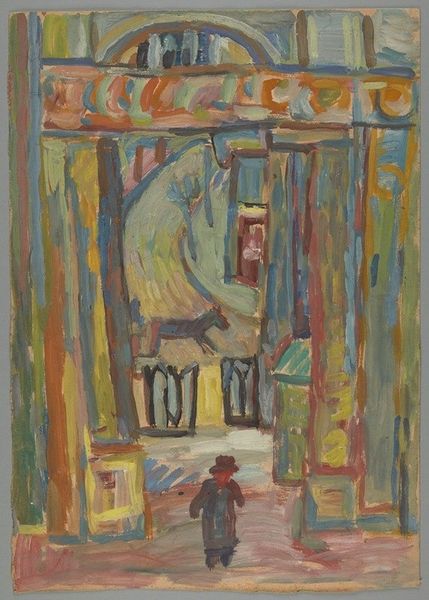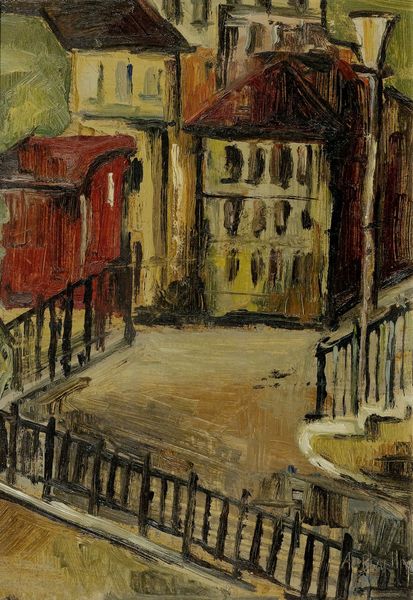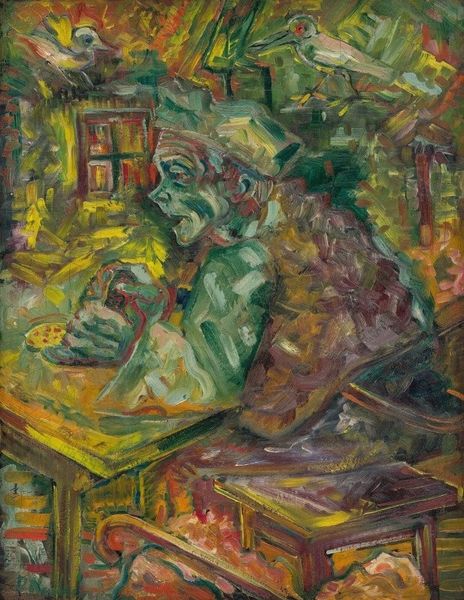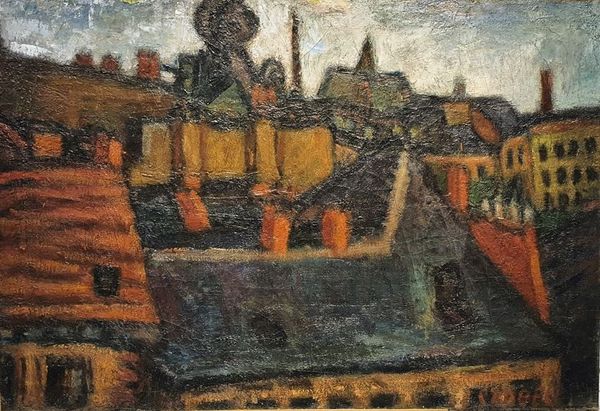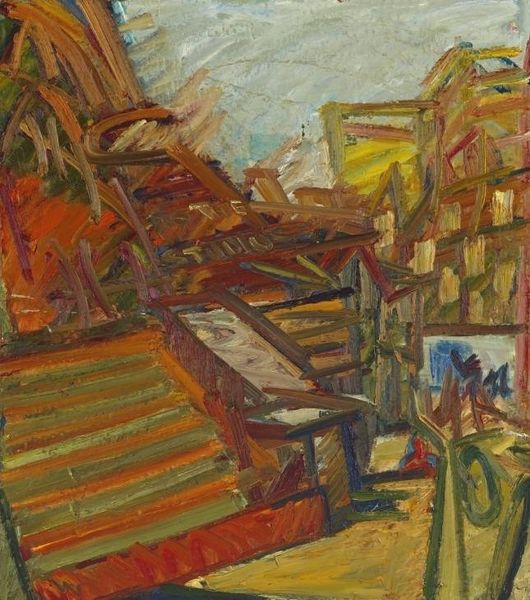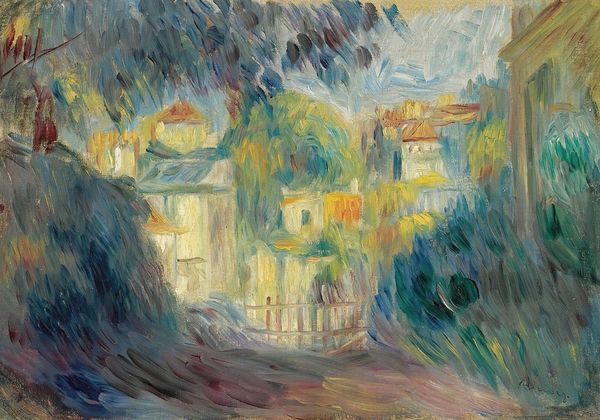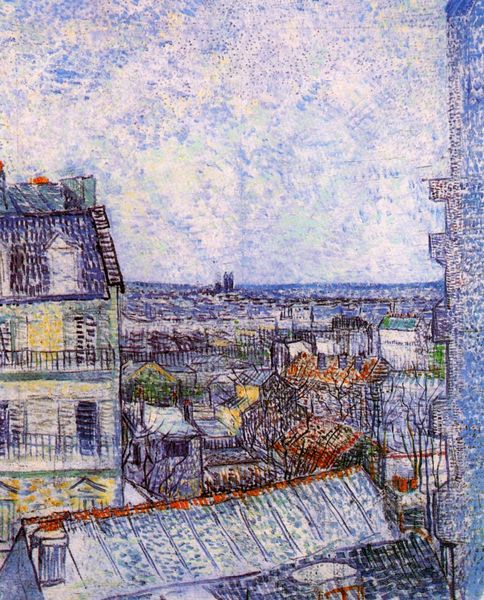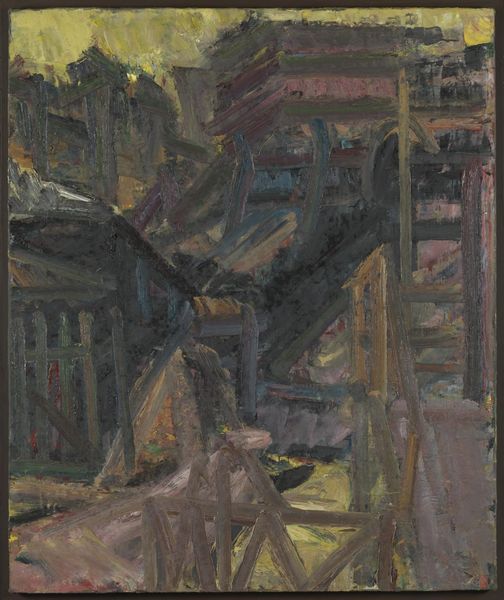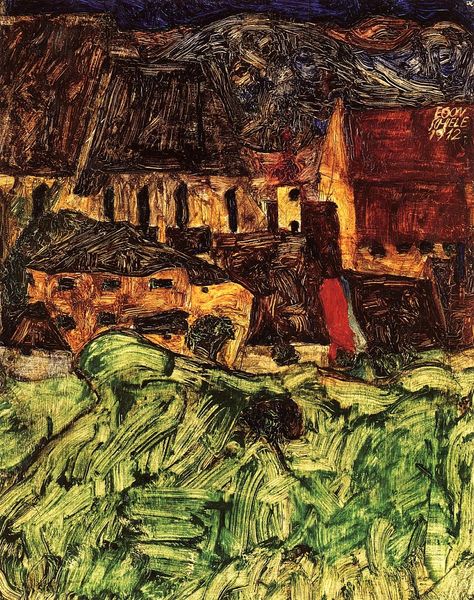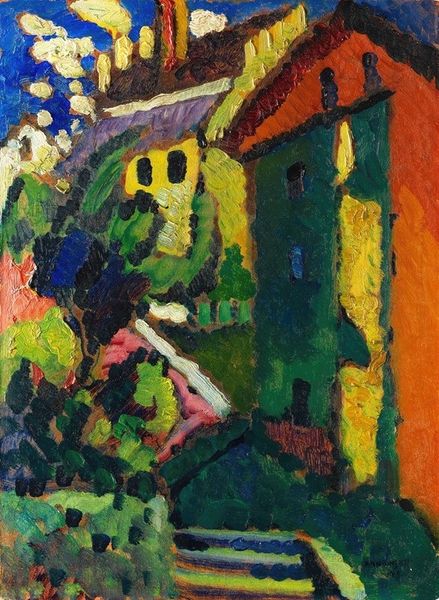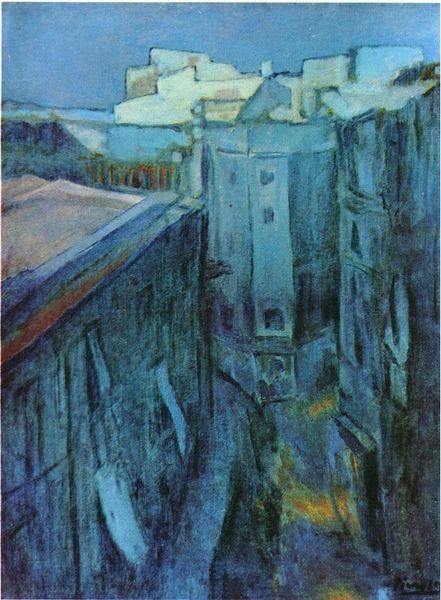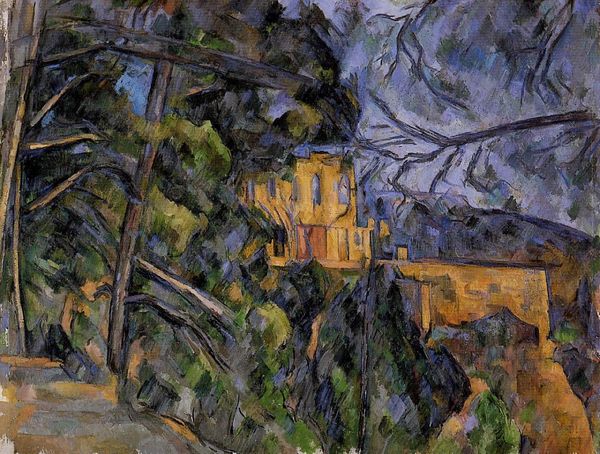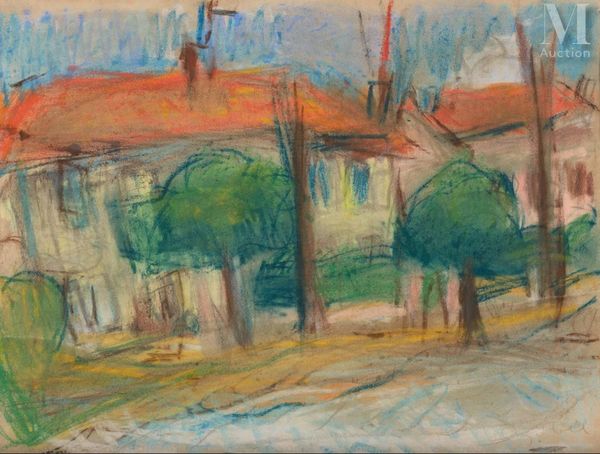
Dimensions: support: 1270 x 914 mm frame: 1390 x 1035 x 80 mm
Copyright: © The estate of Martin Bloch | CC-BY-NC-ND 4.0 DEED, Photo: Tate
Editor: This is Martin Bloch’s “Afternoon in Bangor,” an oil on canvas in the Tate collection. It has such a dreamlike quality with the buildings kind of stacked on top of each other. What do you make of it? Curator: Well, consider Bloch's biography. As a Jewish artist in Germany, he faced increasing persecution, and eventually fled to England in the 1930s. How might this displacement have affected his representation of place and community? Editor: So, you’re saying that the fragmented perspective could be a reflection of his own sense of displacement? Curator: Precisely. It’s less about a literal Bangor, and more about evoking a sense of belonging, or perhaps, the difficulty in achieving it. The public sphere, the very concept of ‘afternoon in Bangor,’ becomes charged with personal and political weight. Editor: That’s fascinating. It definitely makes me see the painting in a new, more complex light. Thanks! Curator: My pleasure. Considering the artist's life and times truly enriches the viewing experience.
Comments
tate 8 months ago
⋮
http://www.tate.org.uk/art/artworks/bloch-afternoon-in-bangor-t00883
Join the conversation
Join millions of artists and users on Artera today and experience the ultimate creative platform.
tate 8 months ago
⋮
In 1934 Bloch, declared a 'degenerate artist' by the Nazi regime, fled Germany and set up an art school in London. In the early 1940s he became a close friend of the Polish émigré Josef Herman, also represented in this display, through whom he came to visit Wales on a number of occasions. To his Welsh scenes Bloch brought his characteristic high-keyed colour, inspired by French Fauvism, and concern with pictorial structure. Although his paintings are informative about the particulars of the landscape and the activities of the people shown, they often also convey the artist's strong feeling for the permanence or continuity of the scenes represented. Gallery label, September 2004
